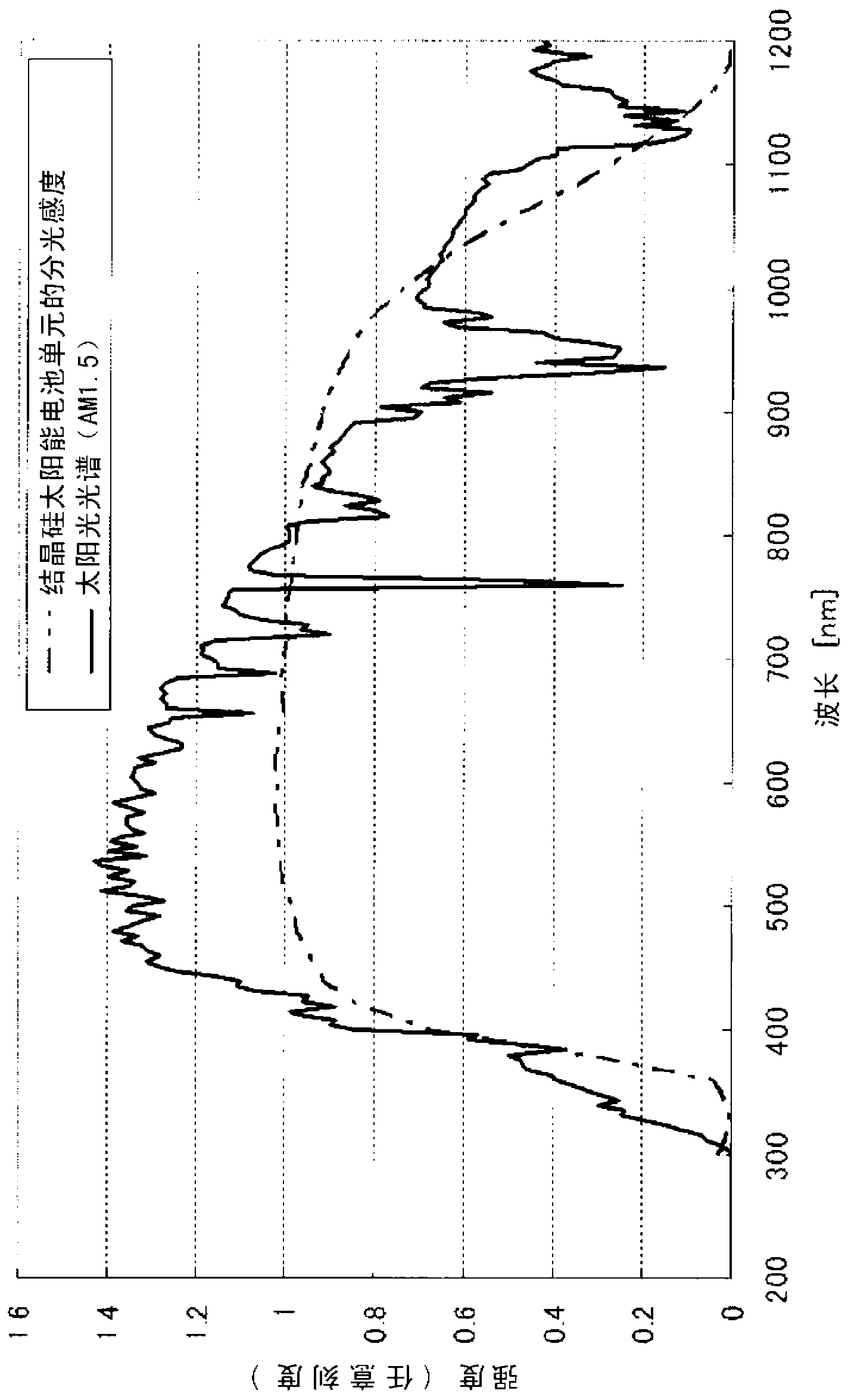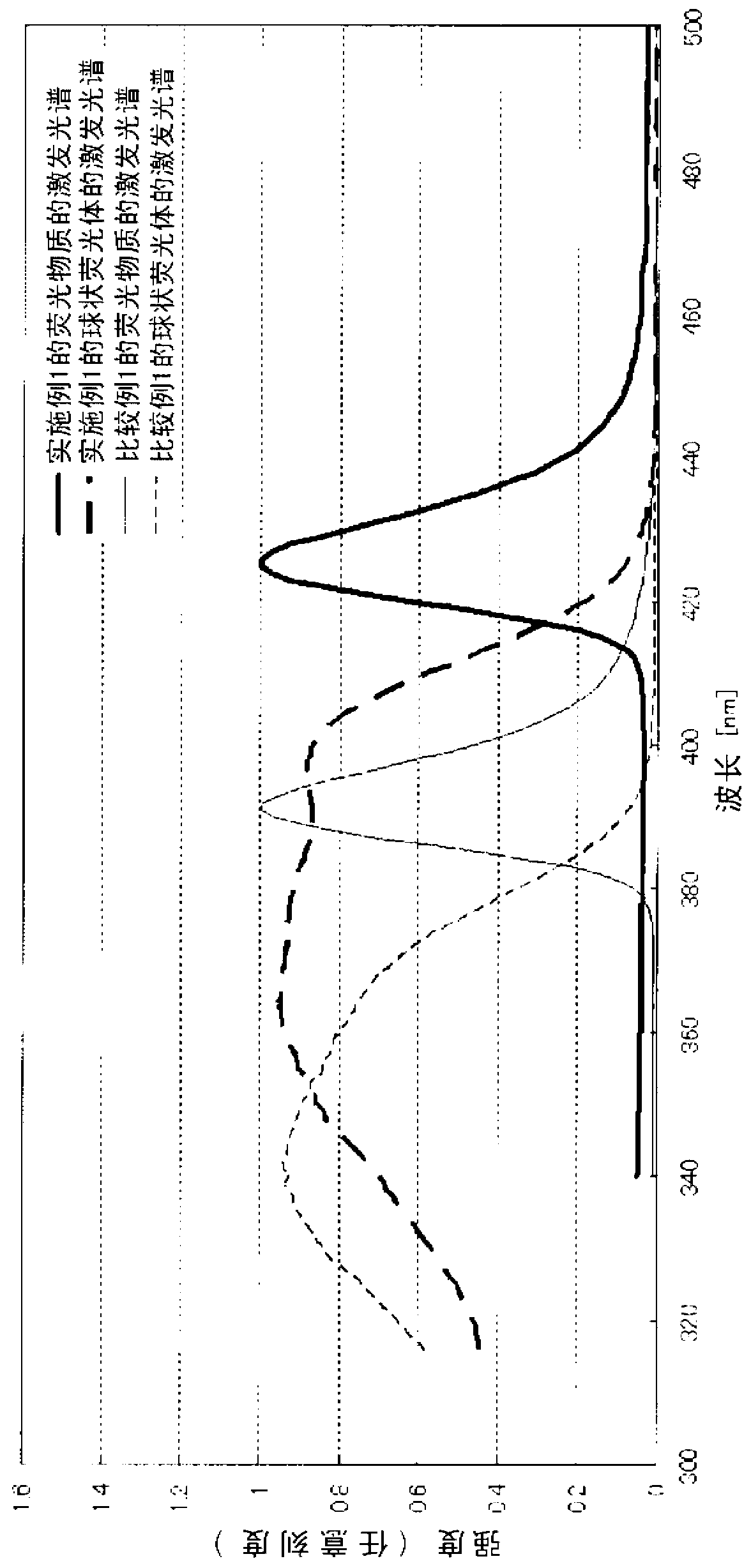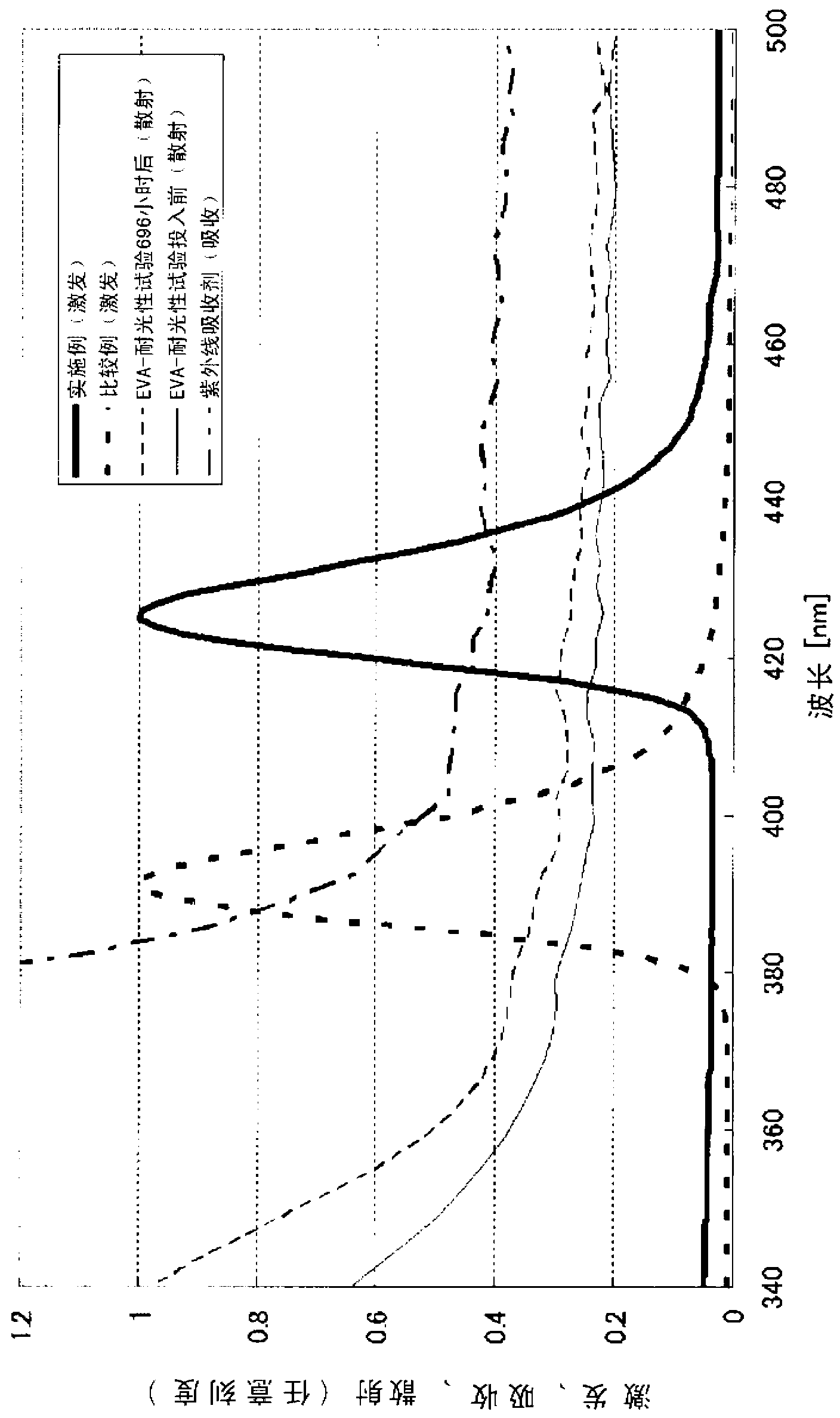Spherical phosphor, sealing material for wavelength-conversion-type solar batteries, solar battery module, and process for manufacture of those
A solar cell and wavelength conversion technology, applied in the field of spherical phosphors, can solve the problem of no contribution to power generation by crystalline silicon solar cells, and achieve the effects of improving light utilization efficiency and stable power generation efficiency
- Summary
- Abstract
- Description
- Claims
- Application Information
AI Technical Summary
Problems solved by technology
Method used
Image
Examples
Embodiment 1)
[0181]
[0182] Weigh 0.96 g (0.04 mol) of sodium hydroxide, and add 22.5 ml of dehydrated tetrahydrofuran under a nitrogen atmosphere. While vigorously stirring, a solution of 2.52 g (0.02 mol) of 2-acetylthiophene and 3.70 g (0.024 mol) of methyl 4-fluorobenzoate dissolved in 12.5 ml of dehydrated tetrahydrofuran was added dropwise over 1 hour. Thereafter, it was refluxed for 8 hours under a nitrogen stream. This was returned to room temperature (25 degreeC), 10.0 g of pure waters were added, and 5.0 ml of 3N hydrochloric acids were added further. The organic layer was separated and concentrated under reduced pressure. The concentrate was recrystallized to obtain 2.83 g (57% yield) of FTP.
[0183] 3 Synthesis of Phen>
[0184] 556.1 mg (2.24 mmol) of FTP synthesized above and 151.4 mg (0.84 mmol) of 1,10-phenanthroline (Phen) were dispersed in 25.0 g of methanol. A solution in which 112.0 mg (2.80 mmol) of sodium hydroxide was dissolved in 10.0 g of methanol was added...
PUM
| Property | Measurement | Unit |
|---|---|---|
| particle size | aaaaa | aaaaa |
| transmittivity | aaaaa | aaaaa |
| refractive index | aaaaa | aaaaa |
Abstract
Description
Claims
Application Information
 Login to View More
Login to View More - Generate Ideas
- Intellectual Property
- Life Sciences
- Materials
- Tech Scout
- Unparalleled Data Quality
- Higher Quality Content
- 60% Fewer Hallucinations
Browse by: Latest US Patents, China's latest patents, Technical Efficacy Thesaurus, Application Domain, Technology Topic, Popular Technical Reports.
© 2025 PatSnap. All rights reserved.Legal|Privacy policy|Modern Slavery Act Transparency Statement|Sitemap|About US| Contact US: help@patsnap.com



